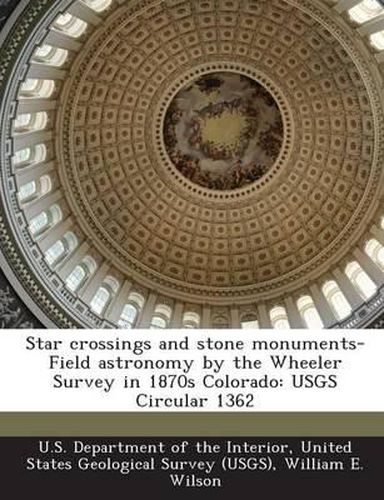Readings Newsletter
Become a Readings Member to make your shopping experience even easier.
Sign in or sign up for free!
You’re not far away from qualifying for FREE standard shipping within Australia
You’ve qualified for FREE standard shipping within Australia
The cart is loading…






The decade of the 1870s was a time of extensive exploration and surveying in the American West. The nation needed knowledge of the cultural features, topography, natural resources, and geology of this land to promote and aid the ‘rapid development of an empire.’ The need was particularly acute in the region that still was known in the early 1870s as Colorado Territory. There, cities and towns were springing up along the base of the Front Range, railroads were expanding, and in the mountains prospectors and miners were exploring the countryside seeking and extracting the region’s abundant mineral resources. Also, recurring conflicts between the newcomers and Native Americans made it desirable to have accurate maps for military purposes. Four major government-sponsored scientific surveys formed the principal organized effort to provide critical knowledge of the land. Civilian scientists led three of these: John Wesley Powell (‘Geographical and Topographical Survey of the Colorado River of the West’); Ferdinand V. Hayden (‘Geological and Geographical Survey of the Territories’); and Clarence King (‘Geological Exploration of the Fortieth Parallel’). Lt. George Montague Wheeler, a young graduate of West Point (Class of 1866) and a member of the U.S. Army Corps of Engineers, led the fourth and most ambitious project (‘United States Geographical Surveys West of the One Hundredth Meridian’).
$9.00 standard shipping within Australia
FREE standard shipping within Australia for orders over $100.00
Express & International shipping calculated at checkout
The decade of the 1870s was a time of extensive exploration and surveying in the American West. The nation needed knowledge of the cultural features, topography, natural resources, and geology of this land to promote and aid the ‘rapid development of an empire.’ The need was particularly acute in the region that still was known in the early 1870s as Colorado Territory. There, cities and towns were springing up along the base of the Front Range, railroads were expanding, and in the mountains prospectors and miners were exploring the countryside seeking and extracting the region’s abundant mineral resources. Also, recurring conflicts between the newcomers and Native Americans made it desirable to have accurate maps for military purposes. Four major government-sponsored scientific surveys formed the principal organized effort to provide critical knowledge of the land. Civilian scientists led three of these: John Wesley Powell (‘Geographical and Topographical Survey of the Colorado River of the West’); Ferdinand V. Hayden (‘Geological and Geographical Survey of the Territories’); and Clarence King (‘Geological Exploration of the Fortieth Parallel’). Lt. George Montague Wheeler, a young graduate of West Point (Class of 1866) and a member of the U.S. Army Corps of Engineers, led the fourth and most ambitious project (‘United States Geographical Surveys West of the One Hundredth Meridian’).